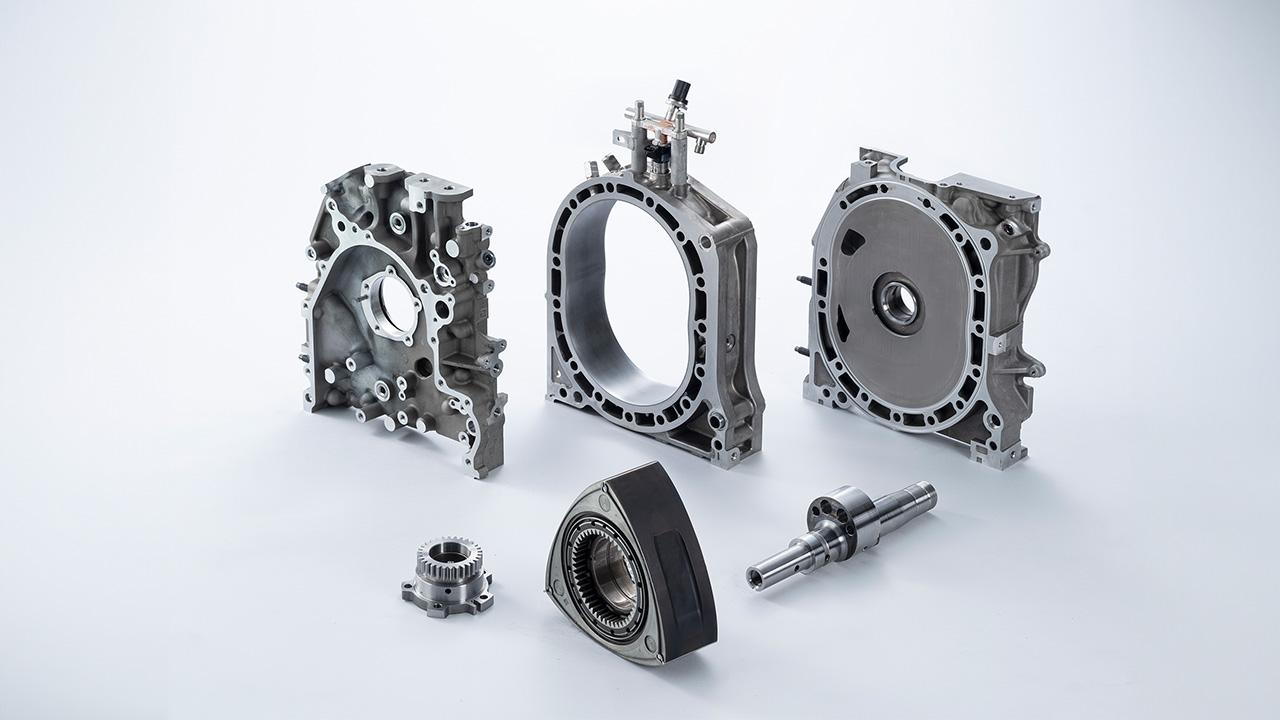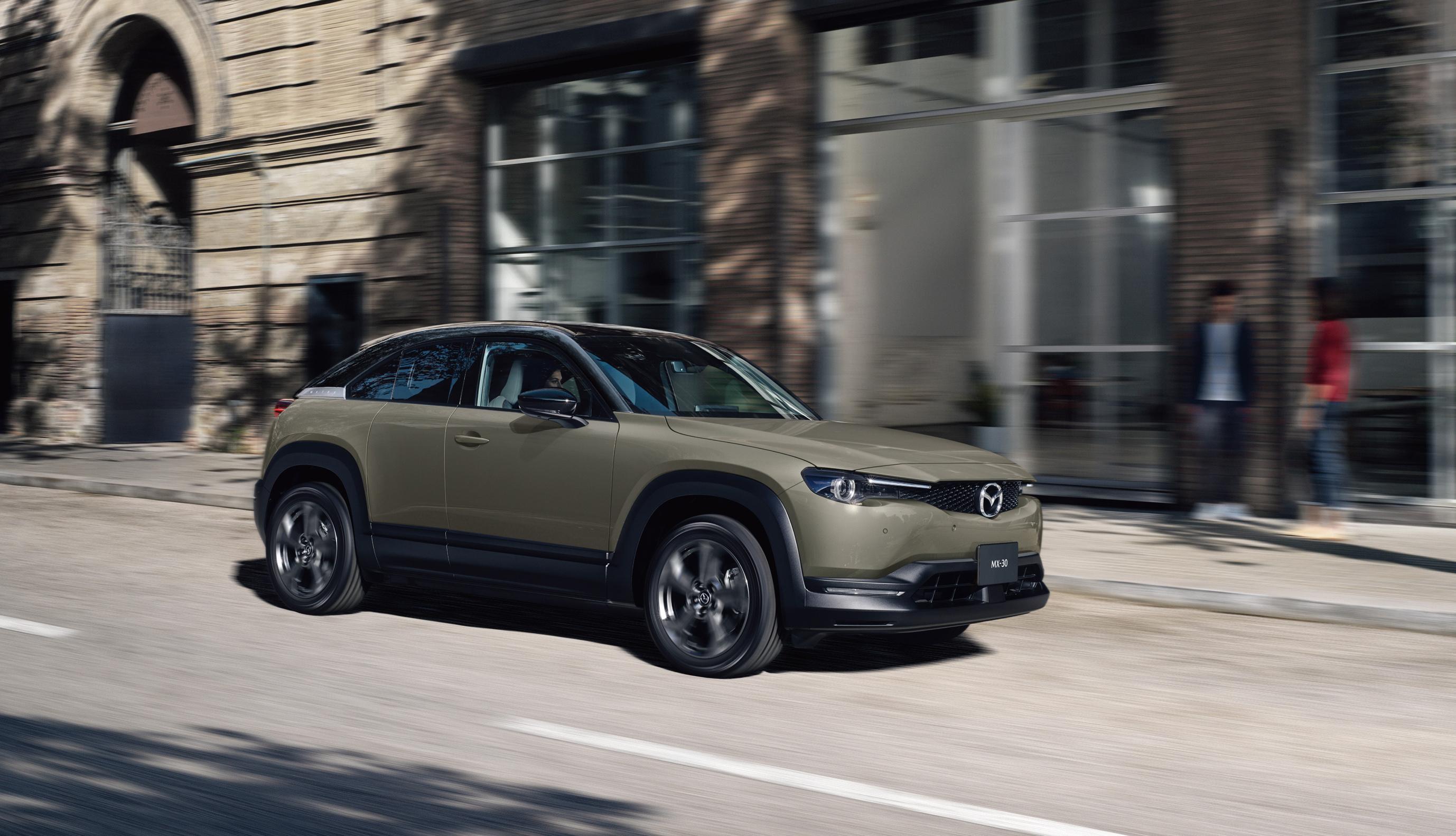
Engine sounds enchant car enthusiasts. But how does the shape of an engine affect its tone? In the series' third article, we hear how rotary engines get their clean, high-pitched sound.
Reviving the rotary
Although mass production of rotary engines ended with the RX-8 in 2012, Mazda kept the development flame alight. After some 11 years, they can once again be found in a mass-market model, this time used exclusively to generate electricity. (Mazda official website updates on the rotary engine (Japanese))

We asked if the 8C rotary engine in this MX-30 will still retain the classic sound. Iwata explained that “while many customers were hoping this would be the case, unfortunately, the engine will be used only to generate power, meaning it will not reach the high revs needed to deliver that luscious rotary sound.”
On the other hand, the superior quietness of rotary engines makes them a good fit for PHEVs.
Did rotary engines make it easier to create the sound for a PHEV, where quiet is key?
Iwata
It wasn’t quite that simple. The structure of rotary engines does make them very quiet on their own, and with two rotors the vibrations cancel each other out. But the MX-30 uses a single rotor, so we had to deal with the vibration component that cannot be offset and creates noise inside the car.
To prevent vibrations from passing through the car body, we had to block the transmission routes from the various parts that connect to it and add vibration dampening functions… this aspect was challenging.
Even so, we refined the engine control to ensure the sound responds to the driver’s input, including the feel of higher revs when accelerating or the feedback when you step on the gas. Thankfully, the fact that the engine is used solely for power generation gave us greater freedom in building it.
The unforgettable Mazda 787B
For fans of the rotary sound, the shriek of the Mazda 787B, which in 1991 became the first Japanese car to win the 24 Hours of Le Mans, is surely among the most memorable.
What made that machine so special?
Iwata
The 787B uses a peripheral port configuration*, which allows the rotor to turn faster and boosts speed by helping exhaust pressure inside the housing to drop more quickly. This gives the car that high-pitched howl at high revs.
*Air inlets and exhaust outlets are designed directly into the cocoon-shaped housing, allowing for larger openings that reduce intake/exhaust air resistance. Used in sports cars and performance vehicles to increase power at high RPMs.
By contrast, at low RPMs, the larger openings mean that exhaust gases are expelled in bursts, giving it that powerful pulsating sound unique to racing cars.
And because the 787B has four rotors, just like multicylinder reciprocating engines, you get that wonderful shrill scream when you step through to the high-rev range, from 4,500 to 7,000 RPM.
I’m not just saying this to flatter you guys, but I like the sound of the LFA, which feels very close to the four-rotor sound.
When he mentioned the LFA, we also asked Iwata to list some other favorites. “In my younger days, I loved how the Honda VTEC sound changed as the air valves opened up above 6,000 revs. A distinctive tone can sound like noise to some, so it’s definitely a matter of taste,” he replied.
“Personally, I hope we can keep the sounds that represent each company’s signature engine structures and mechanisms, like the telltale rumble of Subaru’s horizontally-opposed machines.”
What sounds good to Mazda
Finally, we asked Iwata what he considers a “good sound.”
Iwata
For most people, I think a good engine sound happens when you step on it and crank up the revs to a high speed. In that respect, I believe rotary engines really do have a nice sound that stays clean at high RPMs.
But in a broader sense, I think a “good sound” is relative to what you’d expect for a given driving situation or driver input.
For instance, our company competes in Super Taikyu with diesel engines, which don't hit the same high RPMs as gasoline engines. On top of that, the turbo dampens the pulsation, so the engine sound is weaker.
Our circuit crews even ask if we can’t make it sound more powerful (laughs).
Ultimately I think a good sound has to resonate emotionally with the listener.
At Mazda, our carmaking is driven by the Jinba-Ittai (unity between horse and rider) philosophy, and sound production is part of that.
We will continue to pursue a sound that is in tune with the driver’s senses and matches how they control the vehicle, by turns expressive and restrained as the situation demands.
Whether it’s rotary, reciprocating, or diesel, I’m sure that every manufacturer is toiling away to achieve that same goal.

“That’s easier said than done,” Iwata added with a wry smile. Yet now that the rotary engine has been revived, we hope to once again hear that pure, unconstrained tone as it soars into the higher revolutions.

